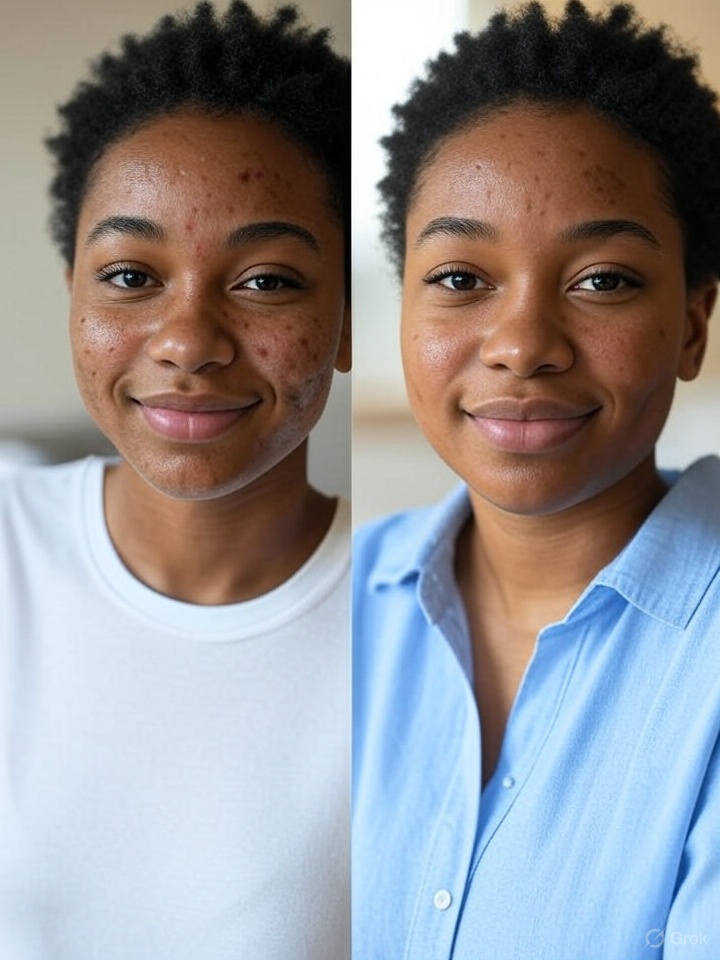How to Get Rid of Acne Scars: Proven Methods and Products


Download Bellina to book services, shop products, and get personalized beauty recommendations
Acne scars form when acne inflammation damages the skin’s collagen, leaving behind textural changes or discoloration. Common types include:
According to Healthline (2025-05-15), acne scars affect millions globally, with oily or acne-prone skin types being particularly susceptible. These scars can impact more than just appearance—they can influence self-esteem. Addressing them requires a tailored skincare routine with ingredients like retinol, vitamin C, niacinamide, and salicylic acid, alongside professional treatments for lasting results.
Fading acne scars involves a combination of at-home care and professional interventions. Below are the most effective methods, optimized for your skincare journey.
Topical beauty products are the foundation of scar reduction, targeting pigmentation and texture over time.
Actionable Tip: Apply a pea-sized amount of serum with these ingredients at night, followed by a lightweight moisturizer with hyaluronic acid to hydrate without clogging pores.
Chemical peels use acids (e.g., glycolic acid, trichloroacetic acid) to remove the top layer of skin, encouraging new cell growth. They’re highly effective for hyperpigmentation and mild atrophic scars.
Actionable Tip: Consult a dermatologist for a personalized peel strength, and always wear SPF 30+ post-treatment to protect your skincare routine results.
Microneedling involves tiny needles creating controlled micro-injuries to trigger collagen and elastin production. It’s a top choice for pitted scars, with studies from the Journal of Clinical and Aesthetic Dermatology (2024) showing significant improvement after 3-6 sessions.
Actionable Tip: Use a clean device and follow with a soothing product like aloe vera to calm the skin.
Laser treatments, such as fractional CO2 or pulsed dye lasers, target scar tissue with precision, promoting regeneration. They’re best for severe scarring and can also address anti-aging concerns.
Actionable Tip: Book a consultation to assess skin type and scar depth, and avoid sun exposure post-treatment.
For those preferring natural beauty options, some home remedies can complement professional treatments.
Actionable Tip: Patch-test natural ingredients and limit use to 10-15 minutes to prevent sensitivity.
Featured Snippet Tip: For best results, combine topical vitamin C with microneedling, as studies suggest enhanced collagen production (Dermatologic Surgery, 2024).
Even with the right methods, pitfalls can hinder progress. Avoid these based on expert insights:
Mild scars may fade in 6-12 weeks with consistent topical use, while deeper scars may need 6-12 months with professional treatments.
Not entirely, but a proper skincare routine with salicylic acid and oil control can reduce acne severity, minimizing scar risk.
They can help with mild scarring or as a supplement, but professional methods like microneedling offer faster, more significant results.
With numbing cream, discomfort is minimal, though you might feel a slight prickling sensation.
Erasing acne scars is a journey worth taking, and with these proven methods—topicals, chemical peels, microneedling, lasers, and natural remedies—you can achieve smoother, glowing skin. Incorporate beauty tips like daily SPF and anti-aging ingredients like retinol into your skincare routine, and consult a professional for tailored advice. Start today and watch your confidence soar!
Have you tried any of these methods? Share your story or questions in the comments below! If this guide inspired you, share it with friends struggling with acne scars to help them on their path to natural beauty. Let’s support each other in this skincare adventure!
</p>